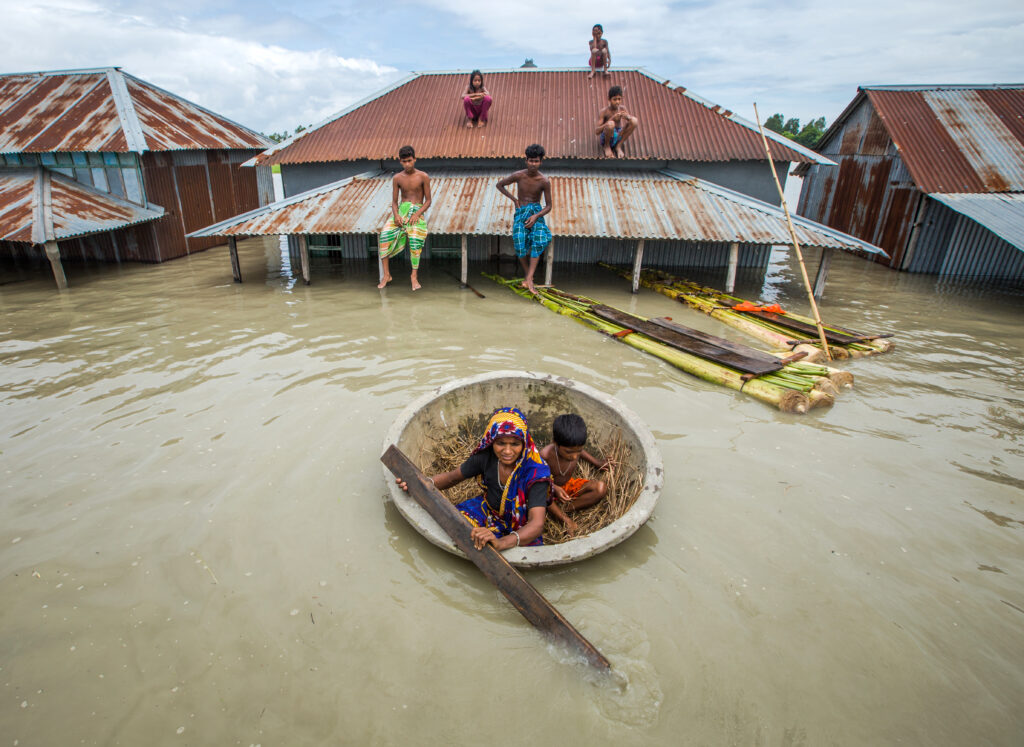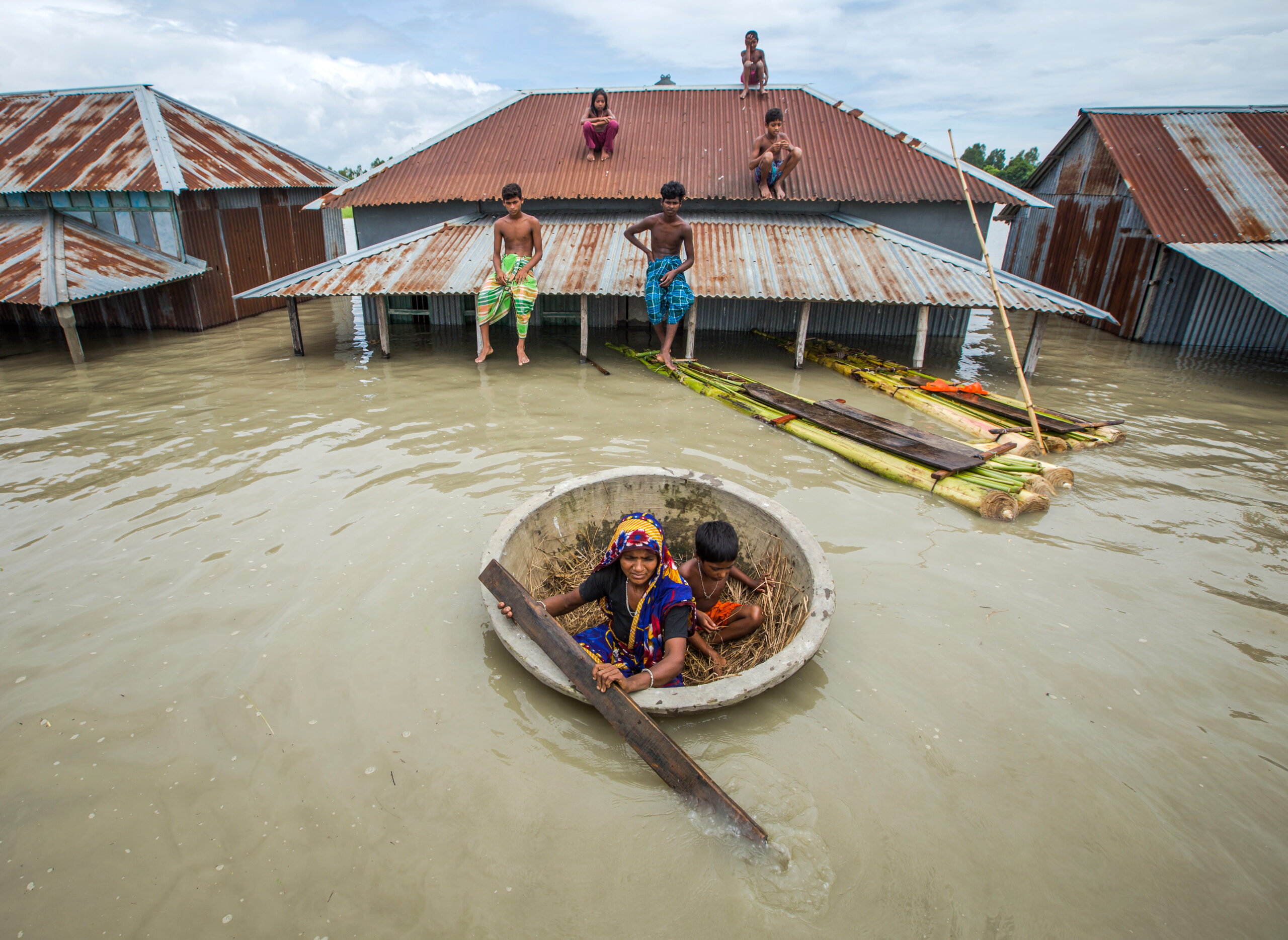
I co-authored this piece, written for Health Affairs, with Renzo Guinto, Rita Issa and Dieudonne Yiweza in October 2021. We wanted to shine a spotlight on the intersections of migration, climate and health in the context of the covid-19 pandemic. It opens a debate around the implications for models of equitable primary healthcare delivery on a warming planet characterised by forced migration.
“Build back better,” we cried, just a couple of months into the pandemic, urgently seeking a silver lining amid the unfolding horror. Yet, aside from small, localised efforts, there are few signs that governments intend to capitalise on this opportunity, and the phrase is already beginning to take on a hollow, cynical ring.
On one thing, most of us can agree. Future pandemics are almost guaranteed. But what if such pandemics are a clarion call to action, a warning that our continued co-existence on this planet is under threat if we do not take radical action?
The pandemic has been met not only with the ugliness of vaccine apartheid but with a seeming failure to learn from the lessons of COVID-19 and mitigate for other public health threats that similarly disregard national boundaries.
Although COVID-19 has seen borders closed and territories more closely guarded than ever, the pandemic has also shown just how permeable those borders are. COVID-19 does not respect these artificial boundaries nor does climate change.
In one direct consequence of the growing pressures upon our planet, we are seeing many populations around the world experiencing climate-related displacement internally within countries and across borders. By the end of 2020, there were more than 91.9 million forcibly displaced people globally—refugees, internally displaced persons, stateless persons, asylum-seekers, and returnees. During 2020 alone, more than 30 million people were driven from their homes by extreme weather conditions as the climate grew increasingly chaotic. COVID-19 registers as just one of multiple and diverse threats to the very existence of such populations.
We must be ready for the increasing demographical shifts that will occur as larger areas of land become increasingly uninhabitable as a result of diverse climatic threats, from slow onset processes including rising sea levels and desertification to extreme weather events such as floods and cyclones. Projections suggest that numbers of climate-induced migrants could reach one billion people migrating within and across borders by 2050.
COVID-19 has ably demonstrated just how fragile our health systems are and how critical political preparedness and planning is to mitigating risk. Climate migration is no different: The flow of people has significant implications for health systems. Preparing for and mitigating against climate change offers an opportunity for a triple win—cleaner skies, healthier diets, and safer places to live—as well as reduces the risk factors of future infectious diseases. Aligning the global recovery from COVID-19 with our response to climate change offers the opportunity to improve public health, create a sustainable economy, and protect the environment. Adaptation and mitigation efforts today will reduce displacement of vulnerable populations and will ensure better health for those who do migrate or are forcibly displaced.
What Does This Mean For Health Systems?
It is well acknowledged that a core part of strengthening health systems, including in the context of climate change-related displacement and migration, is working toward truly universal health care coverage (UHC) through investments in primary care that recognise that people move within and across borders due to different reasons, including climate change.
However, despite repeated calls for investment in primary care over the years by the World Health Organization, notably through its 2018 Astana Declaration, and more recently by the World Bank, we are far from reaching adequate UHC and primary health care. There is now a window of opportunity to invest in primary care in ways that anticipate migration patterns and are built for mobile populations.
UHC encompasses three parameters: population covered, services offered, and financing mechanisms. To meet the needs of climate migrants, UHC must be inclusive of migrants. Climate migration will result in population flux within and across borders, and inclusion of migrants must go beyond financial support to consider the accessibility of the health care infrastructure, to actively break down barriers to care for migrants.
A primary care workforce adequate in size and equipped with both empathetic consultation skills and an awareness of the political, economic, and social determinants of health, including the impacts of displacement-related trauma on physical and mental health, are equally important. This means that we need to re-think graduate and in-service training programs to ensure that a sufficient pipeline of different cadres of primary health care workers is recruited into training; curricula are adapted to explicitly include migrant health needs; and consultation skills (encompassing empathy and compassion) are integrated into core primary care training.
This workforce must be supported by an enabling environment in which UHC service design is responsive to the health risks associated with climate change. New models of care—models that draw on a full range of primary care cadres, from doctors to nurses to community health workers—will be needed and must be attuned to mental health issues and physical health issues in equal measure. Amongst the systemic barriers to care, access to interpreters is an obvious challenge. In the absence of reliable and affordable access to interpreters, rapidly advancing technology to interpret in real time using artificial intelligence can increasingly help us here, albeit this remains an imperfect solution with scope for miscommunication and loss of human connection.
Meanwhile, portable medical records can be a quick win for mobile populations, particularly where electronic medical records are not widespread or cannot be easily shared between health care providers. Hand-held portable medical records, which enable any health care worker to check on an individual’s medical history before prescribing further treatment, are already common within refugee health care services in many countries. Putting medical information in the hands of the patient as a default option holds significant potential for quality of care for displaced people.
It is clear that poverty, climate change, conflict, and now pandemic politics—all contributing factors in migration and displacement patterns—have a huge impact on how people access health care and thus on how health care must be organized and delivered. What’s more, the improvements described above can benefit everyone, not only displaced populations.
How Do We Get There?
We need global solutions to global challenges to mitigate fast-approaching risks. Our leaders must decisively commit to lowering emissions, honoring the Paris Agreement on climate change and ensuring bold commitments to protect the environment are made at the United Nations Climate Change Conference (COP26) in Glasgow, Scotland, this November. We also call on our leaders to specifically bring the issue of climate-related migration to the fore. It is imperative that leaders act with courage, and that they do it now. This is the No. 1 priority.
At the same time, to respond to the climate-related migration that we are already seeing, we must listen and learn from those with direct lived experience of displacement, and their fragmented access to systems of health care that comes with disruption. There will not be a single model or approach that works across all settings. We must find ways to ensure that more decision making around service design and resource allocation is in the hands of communities on the frontlines of climate change and displacement, including efforts to create multidirectional learning spaces between practitioners and across borders. Listening to and learning from health care workers living and working in settings affected by migration—often migrants themselves—is a very good place to start.
Written by: Julia Beart, Renzo Guinto, Rita Issa, Dieudonne Yiweza, COVID-19 Lessons For Migrant-Resilient Primary Care Systems On A Warming Planet, Health Affairs Forefront, 12 October 2021, 10.1377/forefront.20211005.623332. © 2021 Health Affairs by Project HOPE – The People-to-People Health Foundation, Inc.

